Union Budget 2024-25 – Soaring Ambition Neglected Foundation
Like the previous six Union budgets presented by her, Union finance minister Nirmala Sitharaman’s seventh consecutive budget has missed the opportunity to make adequate provision for foundational literacy and numeracy and basic education for India’s 265 million in-school children – writes Dilip Thakore
Long-tenured finance minister Nirmala Sitharaman’s seventh consecutive Union Budget 2024-25 has attracted favourable comment from industry leaders, academics, media pundits and the commentariat, and brickbats from the rejuvenated opposition party leaders.
As usual, industry spokespersons have lauded it. Especially for continuity and attention to macro-economic stability. They derive comfort from the BJP/NDA 3.0 government’s sizeable allocation for infrastructure capex (Rs.11.11 lakh crore of a total budget expenditure of Rs.48.21 lakh crore), overdue attention to boosting the growth of MSMEs (micro, small and medium enterprises) and skilling India’s youth to prepare them for gainful employment.
On the other hand, leaders of opposition parties who received a new lease of life in General Election 2024 in which the BJP’s brute majority in the Lok Sabha was reduced to 240 from the earlier 303 (and the Congress party’s tally almost doubled from 52 to 99), have condemned Union Budget 2024-25 for paying little more than lip service to inflation and unemployment, especially of India’s huge youth population streaming out of education institutions.
Media coverage of the budget has varied between sombre editorials and jokey coverage in dailies which report only parts of the budget. To provide a holistic picture of the latest income and expenditure balancing act of the BJP/NDA government which has been in power at the Centre since 2014, and especially to assess its provision for long-neglected education and human resource development that your editors believe is the essential precondition of national development, we present a holistic overview of Union Budget 2024-25. The objective is to evaluate the extent to which it will enable high potential but chronically mismanaged India to move towards attaining middle class nation status.
Although in India, the ritual of drawing up the annual Union Budget is projected as an arcane and complex science, stripped down to basics, the budget of the Central government (and state governments) is essentially an income and expenditure balancing exercise, not very different from balancing budgets in households countrywide. As in every household, the task of government is to do its utmost to increase income to fund expenditure. Except that unlike private households, by virtue of its control of the Reserve Bank of India, the Central government has the power to print additional currency unlimitedly, i.e run up a fiscal deficit.
Unlike Mr. Micawber (David Copperfield) who dreaded fiscal deficits (“annual income twenty pounds, annual expenditure nineteen pounds nineteen and six, result happiness; annual income twenty pounds, annual expenditure twenty pounds naught and six, result misery”), governments don’t fear debtors prison. In Union Budget 2024-25, the fiscal deficit of the Central government is estimated at Rs.16.13 lakh crore, welcomed almost unanimously because it is on a “downward glide path” (4.9 percent of GDP cf. 5.6 percent in 2023-24), and declining deficits contain inflation.
To its credit the Central government intends to substantially augment its revenue/income in 2024-25 by 15 percent to Rs.31.29 lakh crore from 27.28 lakh crore in 2023-24. The budgeted revenue from direct (personal income and corporate income taxes) is Rs. 22.07 lakh crore and Rs.16.17 lakh crore from indirect taxes (excise, customs and GST).
Revenue could have been greater if dividends from the Centre’s 256 public sector enterprises (PSEs) were higher than the budgeted Rs.2.89 lakh crore. But PSEs promoted by successive Congress governments and mis-managed by business-illiterate bureaucrats and clerks since the early 1950s are a legacy millstone which every government at the Centre has carried around its neck since then. The Centre’s average ROI (return on investment) on PSEs is barely 1-2 percent cf. 14-15 percent in private industry and PSEs frequently require allocations from the budget to keep them afloat.
However for ideological and personal aggrandisement and profit of the neta-babu brotherhood, PSEs which should have been denationalised decades ago don’t contribute significant income to the Centre. Therefore, government has to borrow from the market and abroad as a result of which its annual accumulated interest payout burden has spiralled to Rs.11.62 lakh crore (2024-25) and contributes significantly to the Central government’s fiscal deficit.
This despite a separate ministry of disinvestment/ privatisation of PSEs having been established in 1999. In Union budget 2024-25 the revenue (including capital receipts) from the department of public enterprises is shown as a mere Rs.26.60 crore. On the other hand, the market value of all Central PSEs is an estimated Rs.22 lakh crore according to CareEdge, a Mumbai-based rating agency cited by Business Today (August 4). Why aren’t they auctioned lock, stock and barrel and sale proceeds utilised to draw down the Centre’s debt burden which will reduce its annual interest payout? Inevitably, their few thousand workers — used to the cushy life — will object on convenient ideological grounds.
But the real reason is that even loss-making PSEs provide ruling party politicians and bureaucrats of all stripes, hues and ideologies myriad opportunities to earn ‘side incomes’ by way of cuts and commissions on equipment purchases and service contracts. Former Union railways minister Laloo Prasad Yadav is under trial for allegedly selling secure railways jobs in exchange for land parcels. Why give up this enormous power of patronage, particularly since the educated middle class which should be in the vanguard of privatisation of PSEs, tolerates misuse of public assets with bovine indifference? Therefore this at-hand option to offload PSEs which would substantially augment GoI’s capital receipts and enable it to retire debt to reduce the Centre’s annual interest payout of Rs.11.62 lakh crore (equivalent to 9 multiples of its education outlay) and release resources for investment in the social sector (education, health) has not been availed this year as well.
In her 137-minute budget presentation speech to Parliament, Sitharaman identified nine priorities of the BJP/NDA government to attain the objectives for which Budget 2024-25 has been shaped, viz, (i) improve agriculture productivity and resilience; (ii) boost employment and skilling; (iii) enable inclusive human resource development and social justice; (iv) upgrade manufacturing and services; (v) boost urban development; (vi) provide energy security; (vii) build infrastructure; (viii) spurt innovation, research & development and (ix) conceptualise next generation reforms. These are laudable objectives. Except that they have been articulated before and to all intents and purposes are a mere wish list unless the order of priorities is re-arranged.
For instance, the first priority of Budget 2024-25 is to improve agriculture productivity and resilience. But to what extent can rural productivity be improved if the majority of farmers can’t read a fertiliser mix or pesticides application pamphlet? The Annual Status of Education Report (ASER) of the highly-reputed Pratham Education Foundation (estb. 1994) that tests the real learning outcomes of rural students year after year, reports that almost 60 percent of class VII children aged 13-14 years can’t read a simple textbook paragraph in any language, or do three by one digit multiplication and division sums. How can these early teens — 13 percent of whom don’t enter secondary education and start working on family farms — improve productivity and resilience? And the bad news is that learning outcomes in rural — especially government — schools are going from bad to worse.
In departure from past practice ASER 2023 field tested 34,375 teens in the 14-18 age group. It reveals that 25 percent cannot read a class II level textbook fluently in any language, and one-third (33 percent) do not use a smartphone for any activity related to their current education. With such poor fundamental literacy and numeracy, how can rural youth improve their currently rock-bottom productivity?
The average per-hectare yield of staples such as wheat and rice in Canada, Ukraine, the US and China, Thailand and Vietnam is 5-10 multiples of India. This is because every farmer in these countries has had the advantage of good foundational literacy and numeracy education — primary and often secondary education.
To address the ballooning problem of unemployment the FM’s budget speech spread over 58 printed pages gives considerable importance to youth employment and skilling. It moots special Employment Linked Incentives for “first-time employees, and support to employees and employers”, and a Job Creation in Manufacturing programme “which will incentivise additional employment in the manufacturing sector, linked to the employment of first-time employees”. Also proposed is an additional apprenticeship scheme in which 10 million youth will be “voluntarily” provided internship in the country’s Top 500 companies.
Surprisingly, Sitharaman’s marathon budget speech glossed over foundational ECCE (early childhood care and education) and primary education. “Our government is committed to all-round, all-pervasive and all-inclusive development of people, particularly farmers, youth, women and poor. For achieving social justice comprehensively, the saturation approach of covering all eligible people through various programmes including those for education and health will be adopted to empower them by improving their capabilities,” she intoned without any specific reference to education.
That said, she has increased the Centre’s provision for education — primary, secondary and higher — in 2024-25 to Rs.1.20 lakh crore, a mere 6.9 percent higher than last year (Rs.1.12 lakh crore). Together with provisions budgeted for skilling, the Centre’s total outlay for education and skilling aggregates to Rs.1.48 lakh crore. As a percentage of GDP, the Centre’s provision for education of India’s population of children and youth aggregating over 500 million, is 0.37 percent of GDP, less than 0.44 percent spent in 2023-24.
Even though under the Constitution, much of the spending on education is done by state governments (under the Constitution, education falls within the concurrent list), clearly this provision is grossly inadequate. Way back in 1967, the high-powered Kothari Commission constituted by former Prime Minister Indira Gandhi recommended that annual expenditure (Centre plus states) for public education should be equivalent to 6 percent of GDP. This very sage advice has been continuously disregarded by every government at the Centre and in the states. Despite the election manifesto of every major political party routinely vowing to implement this critical human resource development recommendation, the promise has never been redeemed. Annual national outlay for education — to enhance which the Centre should discharge a leadership role — has never exceeded 4 percent of GDP, averaging 3.5 percent for over seven decades.
The price of open, continuous and uninterrupted neglect of public education — the middle class has established a parallel superior private education system which schools 48 percent of the country’s 265 million in-school children — has been humungous. Over 300 million adults in 21st century India are comprehensively illiterate and as mentioned above, almost 60 percent of class VIII children (teenagers) in rural India, in which 60 percent of India’s 1.4 billion population are (under)-employed, aren’t sufficiently literate or numerate for productive employment.
Sentenced to hard slog in the country’s 1.2 million government schools defined by crumbling buildings bereft of libraries, laboratories, lavatories and suffering chronic teacher absenteeism, most of over 140 million school children enrolled are unable to clear the stiff entrance exams of the few dozen top-ranked undergraduate medical and engineering colleges aided (subsidised) by the Central and/or state government.
The minority who complete school education are absorbed into low-quality government-run Arts, Science and Commerce colleges which don’t prepare them for formal sector employment. According to several authoritative studies (McKinsey, Aspiring Minds), 70-80 percent of India’s college graduates are unemployable in the country’s top-ranked companies. Indeed, the Economic Survey 2023-24 published by the Union finance ministry a day before the Union Budget (July 23) admits “one of two college graduates is unemployable” because of lack of skills.
The sin of under-funding foundational literacy and numeracy has been compounded by the almost total neglect to promote vocational/skills education. India hosts a mere 15,000 VET (vocational education and training) institutes cf. 500,000 in China. And whereas VET is a respectable stream of education in developed OECD countries for higher secondary pass students to acquire specialised industrial and professional skills, it has been almost totally neglected in post-independence India. Consequently, a mere 4.4 percent of the country’s massive 560 million workforce has received formal VET. Despite Mahatma Gandhi advising that education of hands is as important as of minds and hearts, this advice has been ignored by Brahmanical bureaucrats who drew up the syllabuses of our 67 school examination boards including the pan-India CBSE and CISCE boards.
As a result, the country’s manufacturing sector manned by informally skilled and learn-on-the-job blue collar workers contributes a mere 17 percent of annual GDP, and Indian industrial goods and manufactures are totally uncompetitive in global markets.
Meanwhile with its children provided solid primary and vocational public education, neighbouring communist China has emerged from obscurity to become the manufacturing hub of the world. To the extent that although political relations between China and India are strained because of a long-festering border dispute, Sino-India trade is booming with India heavily dependent on imports of electrical goods, components and intermediates for the pharma industry as a result of which the bilateral trade gap (value of imports to value of exports) is a staggering $101.28 billion (Rs.8.5 lakh crore).
With the manufacturing sector unable to absorb a substantially larger number of youth from rural India where landholdings are shrinking and agricultural productivity is rock-bottom because of poor education, the BJP/NDA 3.0 government has belatedly awoken to the importance of vocational education and training.
Confronted with a ballooning youth unemployment problem which lost the BJP a huge amount of votes in the recently concluded General Election 2024, finance minister Nirmala Sitharaman’s Union Budget 2024-25 speech comprises several initiatives to boost skilling to address the problem of youth unemployment, more accurately unemployability.
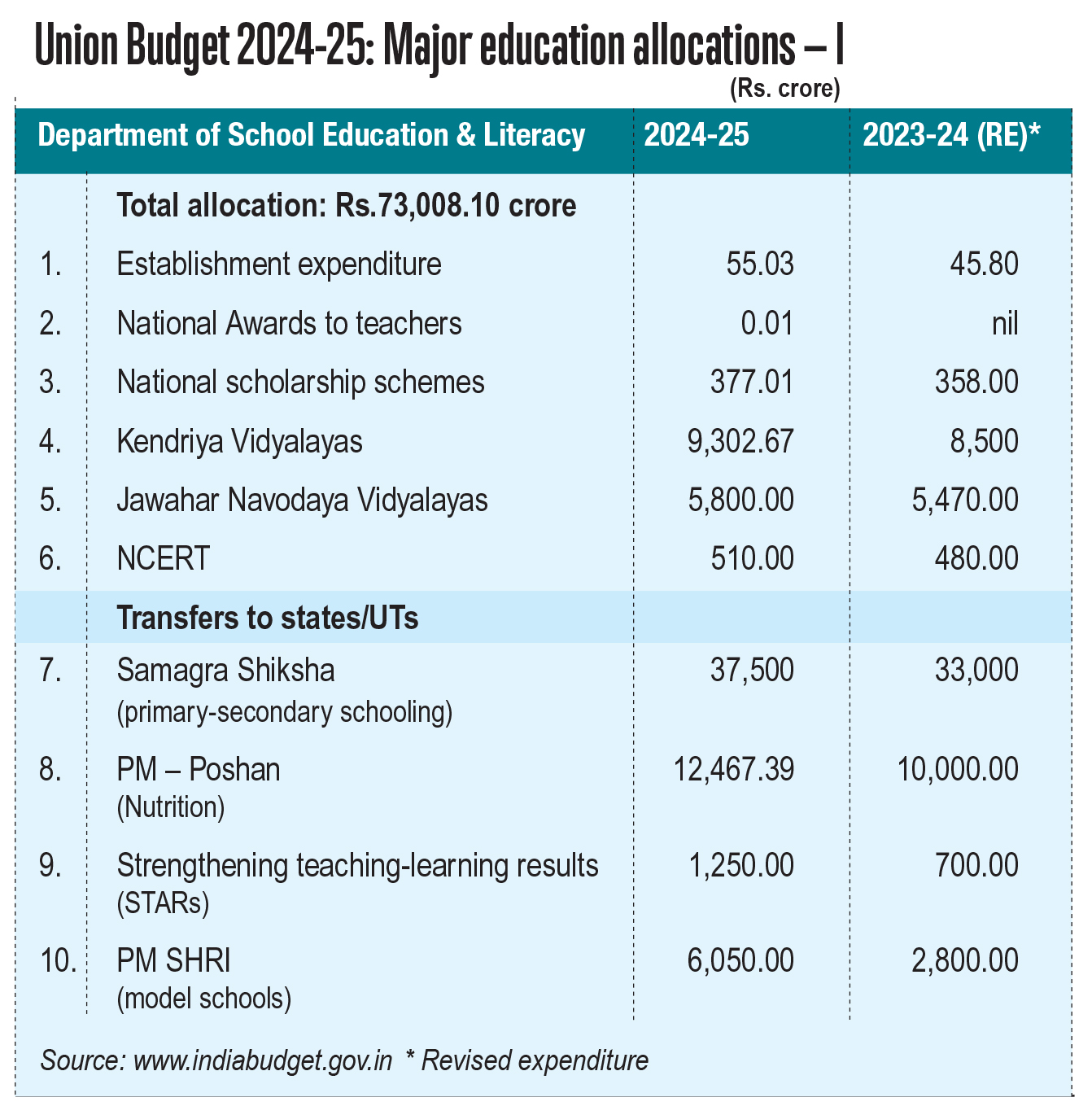 Under the rubric of Priority #2 from among the nine priorities of Budget 2024-25 (detailed above), the finance minister has introduced three specific schemes. Under Scheme A, youth employed in EPFO (Employees Provident Fund Organisation), i.e, organised/formal sector, companies for the first time will be paid an additional one-month’s wage in three installments by government subject to a ceiling of Rs.15,000.
Under the rubric of Priority #2 from among the nine priorities of Budget 2024-25 (detailed above), the finance minister has introduced three specific schemes. Under Scheme A, youth employed in EPFO (Employees Provident Fund Organisation), i.e, organised/formal sector, companies for the first time will be paid an additional one-month’s wage in three installments by government subject to a ceiling of Rs.15,000.
However since this amount is payable to “all persons newly entering the workforce in all formal sectors”, i.e, have already secured employment, it’s not clear how it will generate additional employment though according to the finance minister, this scheme is “expected to benefit 21 lakh (2.1 million) youth”.
Under a second scheme designed to boost employment in the manufacturing sector, the EPFO contribution of first-time employees and employer companies will be paid by government for four years. And under a third scheme to stimulate corporates to take on more employees, government will reimburse employers their EPFO contribution up to Rs.3,000 per month for two years. This scheme is “expected to incentivise additional employment of 50 lakh (5 million) persons,” says Sitharaman. Moreover to boost women’s participation in the workforce, women’s hostels and creches will be “set up in collaboration with industry” and 2 million youth will be skilled in 1,000 upgraded ITIs.
Yet perhaps the most ambitious measure for boosting youth employment and skilling included in the FM’s Budget 2024-25 proposals is a scheme to provide 12-months internship to 1 crore (10 million) youth in the country’s Top 500 companies over five years. During the internship, a monthly allowance of Rs.5,000 plus a one-time assistance of Rs.6,000 is payable with companies “expected to bear the training cost and 10 percent of the internship cost from their CSR (corporate social responsibility) funds”.
This translates into every Top 500 company being obliged to employ almost 1,000 interns per year, a huge number. Although subsequent statements from the finance ministry clarified that this scheme is “voluntary”, it has sparked alarm within India Inc.
“Given the poor learning outcomes of students from India’s HEIs (higher education institutions), all freshers that a company inducts are in effect interns. If 1,000 more are added to this number, it will be a heavy burden. The plain truth is that 90 percent of graduates of India’s HEIs except perhaps from IITs and IIMs are totally unprepared for productive work and require on-the-job training for at least two years before they add greater value than their remuneration. And if to the number of freshers, we are obliged to add another 1,000 per year, the additional cost will be significant. Their salaries apart, ill-educated interns require close supervision to prevent them from doing damage to businesses,” opines an HRD (human resource development) manager of a top-ranked engineering company who prefers to remain anonymous.
Shalini Sharma, Assistant Director General of the Delhi-based Progress, Harmony of Development (formerly Punjab Haryana & Delhi) Chamber of Commerce which has 150,000 business enterprises (mainly MSMEs) as members, suggests that rather than rely on Top 500 companies to hire apprentices, local industry leaders need to be encouraged to serve on college and university boards.
“There’s too much focus on Top 500 companies. Instead greater involvement and cooperation between state government colleges and local industry leaders will eliminate misalignment between the academy and industry and boost apprenticeship programmes,” says Sharma.
According to Dr. A.S. Seetharamu, the knowledgeable former professor of education at the Bengaluru-based think-tank Institute for Social and Economic Change (estb. 1974), finance minister Sitharaman’s ambitious initiative for skilling 41 million youth in five years while welcome, is likely to have limited impact because skilling of adequate quality and standards, is the “superstructure in the educational ladder”.
“Children require strong foundational literacy and numeracy, and good language and basic digital learning in primary-secondary school from class IV up to class X. This learning is essential for the success of the ambitious plan of skilling youth for productive employment as promised in Budget 2024-25. Therefore, there is no alternative to scaling up the national annual outlay for public education to at least 6 percent of GDP as recommended by the Kothari Commission half a century ago,” opines Seetharamu.
Moreover although the Union finance minister calculates that the skilling programmes announced will “benefit” 41 million youth over five years, it is difficult to believe that the lukewarm schemes announced in her latest budget will upskill so many individuals, let alone generate anywhere near the number of jobs forecast. Writing in the Economic Times (July 24), the daily’s éminence grise economist Swaminathan Anklesaria Aiyar dismisses these job and skilling numbers as “pies in the sky”.
“India is full of graduates from third-rate colleges with degrees but no real skills. They do not want blue collar jobs and are unfit for white collar jobs. Meanwhile companies complain of shortage of good STEM (science, technology, engineering and maths) graduates. India needs an upgrading of its entire rotten educational system and that will take decades,” writes Aiyar.
However your editors don’t share this pessimistic outlook. We believe that with innovative thinking and determination, the education system can be upgraded and rejuvenated within a few years. For the past decade conterminously with presentation of the Union Budget to Parliament in New Delhi, EducationWorld has been presenting a schema for the Centre to mobilise over Rs.6-8 lakh crore for investment in education and human resource development.
This calculus has been forwarded to dozens of eminent economists (including Swaminathan Aiyar) for comment at risk of disparagement, by your editor, not an economist by education or vocation. Nevertheless as founding editor of Business India and Businessworld — India’s first two business magazines which sowed the seeds of the landmark liberalisation initiative in 1991 — this writer has some knowledge of budgeting and business management.
Therefore, we have some confidence in the logical robustness of this targeted resource mobilisation schema. However to date, not one grey or otherwise eminent economist has cared to respond or comment upon the EW schema. Indeed, a former, now New York-based Deputy Governor of the Reserve Bank of India who vouchsafed a response to enquire whether this publication requires additional funding, refused to comment despite several reminders.
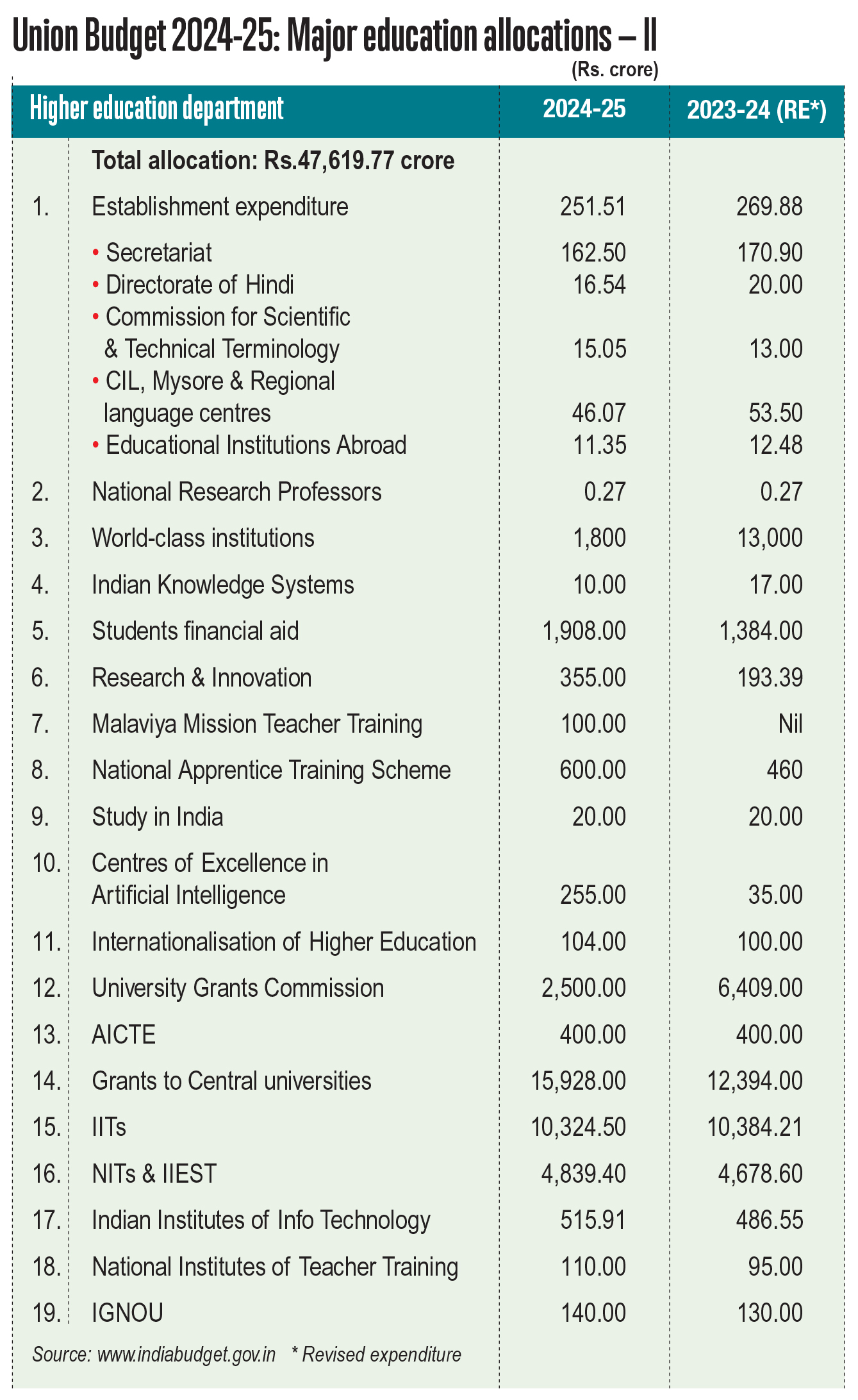 Be that as it may, we believe that by pruning some Central government expenditure, modest taxation of the relatively rich who can be enthused to contribute to educate the world’s largest child and youth population in the national and their own interest, the Union government can mobilise an additional Rs.7-8 lakh crore for ramping-up the country’s “entire rotten” public education system through a supplementary budget this very year.
Be that as it may, we believe that by pruning some Central government expenditure, modest taxation of the relatively rich who can be enthused to contribute to educate the world’s largest child and youth population in the national and their own interest, the Union government can mobilise an additional Rs.7-8 lakh crore for ramping-up the country’s “entire rotten” public education system through a supplementary budget this very year.
Obviously, this requires a national, bipartisan effort through what eminent teacher-educator Maya Menon describes as “de-politicisation of education” and support of the academy, establishment and educated middle class. A revised EW schema for the Central government to raise Rs.7.81 lakh crore for investment in public education and human resource development is presented again for public comment and debate (see p.70).
Meanwhile the government’s best bet to generate employment which, according to the respected Mumbai-based think-tank CMIE, has risen to 9.2 percent cf. the normative 4-5 percent of the workforce, is to quickly improve ease of business for the country’s estimated 63 million MSMEs (micro small and medium enterprises) which contribute 40 percent of national manufacturing output and employ 80 percent of the workforce.
According to a recent study conducted by the well-respected youth training and placements firm TeamLease Ltd, under the licence-permit-quota regime ordained by unique Indian socialism, “a typical firm plying its business in the country is required to comply with provisions under 1,536 Acts, fulfil 69,233 compliances, and complete 6,618 filings at the Central, state, and local government levels”.
Rather than the confusing internship scheme drawn up by the finance minister for Top 500 companies which have the wherewithal to cope with obdurate government controls over industry, the finance minister would be better advised to liberate labour-intensive MSMEs from the suffocating rules and regulations of the neta-babu brotherhood.
The importance of MSMEs for industrial development and employment generation is highlighted in India’s China Challenge (2020), a mind-bending narrative authored by Ananth Krishnan, the Mandarin-fluent Beijing-based correspondent of The Hindu, that explains the rise of China from poverty to the world’s top manufacturing factory within the past 40 years.
“Following the end of the commune system and Deng Xiaoping’s market reforms in 1978, China’s growth was propelled by a groundswell of millions of TVEs (town and village enterprises) that produced a powerful surge of strong and balanced growth. Most of the TVEs were run by private entrepreneurs who found a way, through these rural-based enterprises to increase their incomes and go beyond agriculture. And until the mid-1990s, these rural entrepreneurs (equipped with robust foundational literacy and numeracy — Editor) accounted for 30-50 percent of all private sector activity in urban China,” writes Krishnan, who adds that by 1985, these TVEs employed 70 million people.
In terms of ambitious goals-setting, Prime Minister Modi and the BJP/NDA government, now in its third consecutive innings in office at the Centre, can’t be faulted. Seventy-five years after India wrested its political freedom from foreign rule is a sufficiently long period for this country gifted with an intelligent and high-potential population to have abolished illiteracy and attained middle class status. Therefore, the PM’s goals of a Viksit (developed) India and $30 trillion GDP (cf. current $3.5 billion) by 2047 — the centenary year of India’s independence — are as overdue as they are legitimate. Yet there’s considerable divergence of opinion on ways and means to attain these national goals.
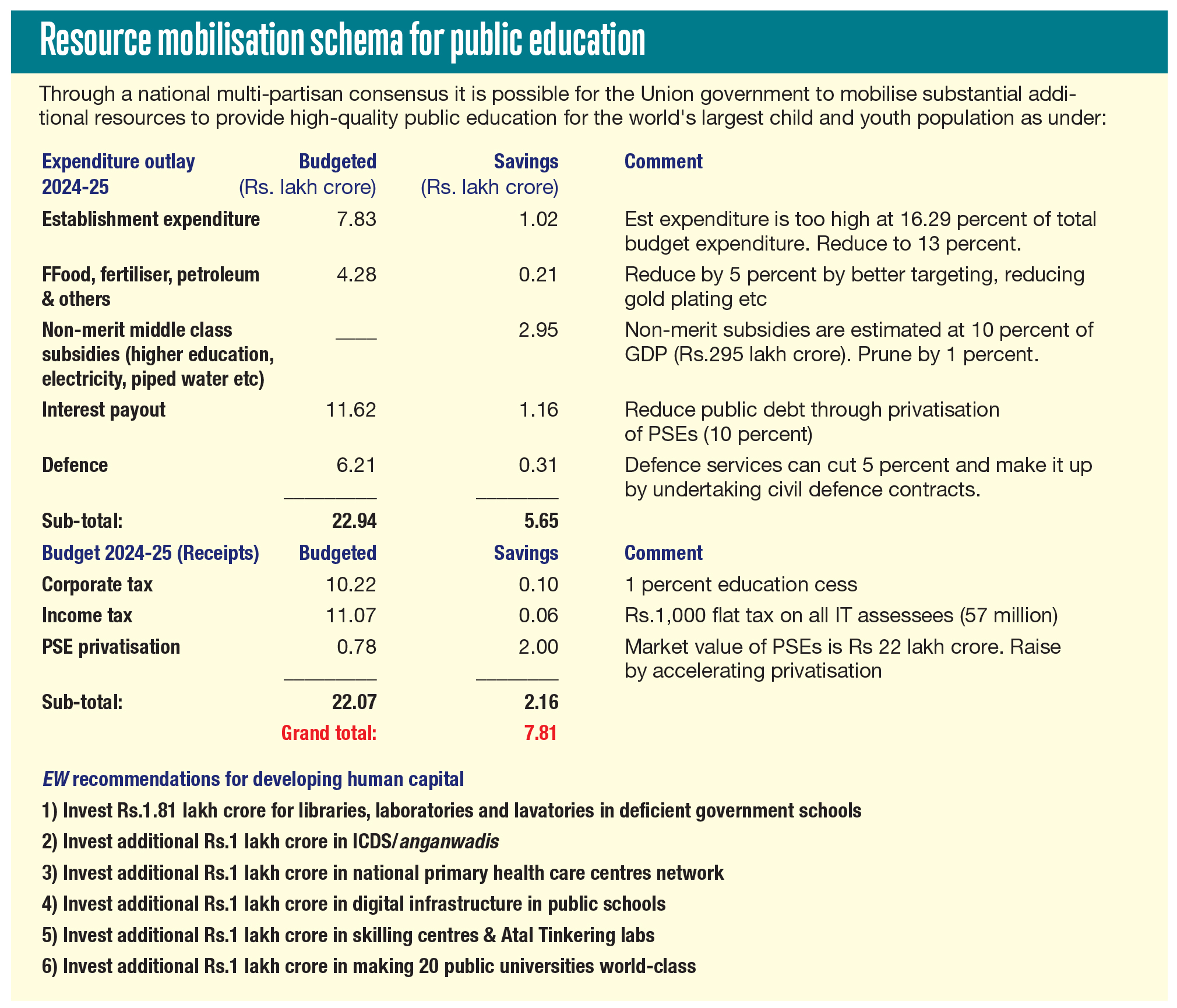 As evidenced by provisions of Union Budget 2024-25, the BJP/NDA government believes that greater infrastructure expenditure, which will have a multiplier effect for economic growth, and ease of doing for domestic and foreign enterprises is the way forward. Undoubtedly it is. Yet public education and mass human resource development remains this government’s — as of its predecessor governments in Delhi and in the states — blindspot.
As evidenced by provisions of Union Budget 2024-25, the BJP/NDA government believes that greater infrastructure expenditure, which will have a multiplier effect for economic growth, and ease of doing for domestic and foreign enterprises is the way forward. Undoubtedly it is. Yet public education and mass human resource development remains this government’s — as of its predecessor governments in Delhi and in the states — blindspot.
Although there is no historical precedent of any nation — except perhaps the oil rich countries of the Middle East — attaining high per capita income without banishing illiteracy and achieving good learning outcomes in primary-secondary education, post-independence India’s governments and the establishment have failed to make sufficient provision for high-quality public education.
The result is rock-bottom productivity in all sectors — agriculture, industry, government and services – and high ICOR (incremental capital-output ratio) typified by prolonged delays in implementing capital-intensive infrastructure projects.
With a short timeline of two decades to go before the centenary of India’s independence, the nation is at an inflection point. The time is nigh for a radical break from traditional incremental growth development models.
The establishment and middle class have to make small sacrifices in the larger interest of national development, especially of the world’s largest child and youth population. Modest cuts in establishment expenditure, middle class subsidies, revenue mobilisation through privatisation of public sector enterprises and reducing defence expenditure (through determined, bona fide negotiation of minor border adjustments with neighbouring countries) is affordable price for developing 21st century India’s abundant and high-potential human resource. It’s a tragedy that successive Union budgets of the BJP/NDA government embellished with resonant high goals, have missed this opportunity.
Perhaps a greater tragedy is the bovine indifference of the academy and educated middle class to this injustice being visited upon over one billion young citizens of the country.
Budget 2024-25 reactions
“The Economic Survey’s unemployability survey shows only 1 in 2 graduates in India has the skills to be gainfully employed, which represents a huge demographic challenge. The budget has prioritised upskilling of youth with an innovative internship program. However, prioritising non-infrastructure spending in education in programs like vocational training and internships is a critical step in the right direction to fix systemic issues of youth unemployability.” — Akshal Agarwal, Co-founder at NatureNurture
“An allocation of Rs.1.48 lakh crore has been made for education, compared to an allocation of Rs.1.12 lakh crore last year. This is an increase in absolute terms and needs to be applauded. Moreover loans of up to Rs 7.5 lakh will be provided with government guarantee for skilling courses and of Rs.10 lakh for higher education. We are hopeful that public expenditure on education will rise towards 6 percent of GDP in years to come.” — Shreevats Jaipuria, Chairman, Education Committee, PHDCCI
“An important aspect of the budget is the Prime Minister’s package of five schemes and initiatives, to increase employment and skilling for 41 million youth, with a budget of Rs.2 lakh crore, over the next five years, highlighting a strategy that will meet future job demands and boost the economy.” — Rajeev Tiwari, Co-founder of STEMROBO
“The allocation of Rs.2 lakh crore under Prime Minister Modi 3.0’s budget is a transformative step towards enhancing education, employment, and skilling opportunities in India. Furthermore, the PM’s comprehensive package of five schemes aims to skill and employ 41 million youth over five years and will inject vitality into the job market and foster a skilled workforce.” — Koneru Satyanarayana, President, KL Deemed to be University
“The provision of a Rs.5,000 internship allowance and Rs.6,000 one-time assistance, along with skilling 2.1 million youth over five years, will significantly boost opportunities. These measures, coupled with enhanced educational support, will empower women and youth, driving India’s economic and social progress forward.” — Rashmi Mittal, Pro Chancellor, LPU
“The three newly announced ‘Employment Linked Incentive’ schemes — First Timers, Job Creation in Manufacturing, and Support to Employers — will undoubtedly drive employment and boost the manufacturing sector.” — Ankur Goel, Founder & CEO Skillable
“This budget marks a pivotal moment for the education sector, with substantial investments aimed at revamping our education system. It’s imperative, however, to monitor the implementation of these initiatives closely to ensure they reach the intended beneficiaries.” — Dr. Bhupendra Bahadur Tiwari, Professor and Director, CMR University, Bengaluru.
“The thrust on education and skilling in the Union Budget, presented by Union finance minister Nirmala Sitharaman, is welcome. The focus on employment, skilling, MSMEs, and the middle class, addresses short-term and long-term concerns of the economy. What I also like is the fact that the minister indicated that States, Industry and Centre will collaborate towards the common objective of training 20 lakh youth over a period of five years.” — Prof Arvind Sahay, Director, MDI Gurgaon
“The government’s recent budget announcement is a commendable step towards addressing the critical needs of our youth and workforce. The allocation of Rs.2 lakh crore over five years to focus on the skilling and employment of 4.1 crore youth is a transformative measure that demonstrates a strong commitment to the future of our nation.” — Rahul Attuluri, CEO of NxtWave





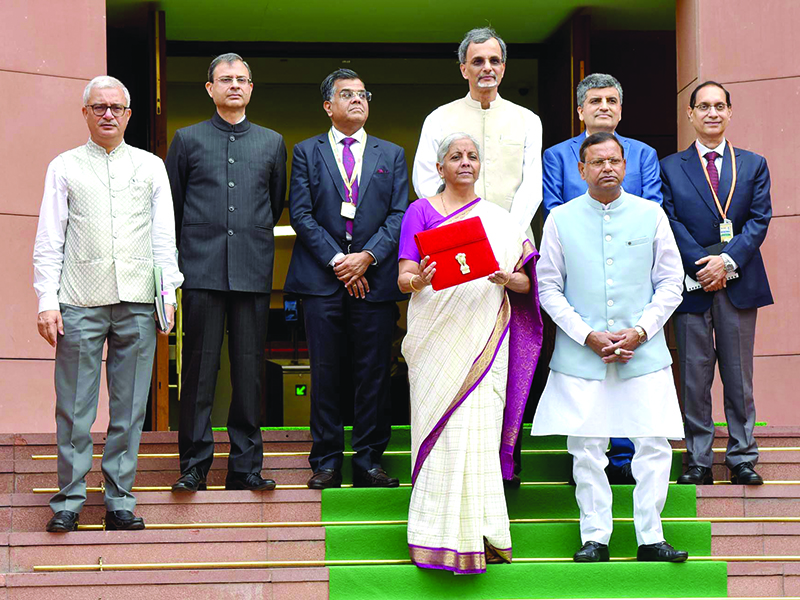

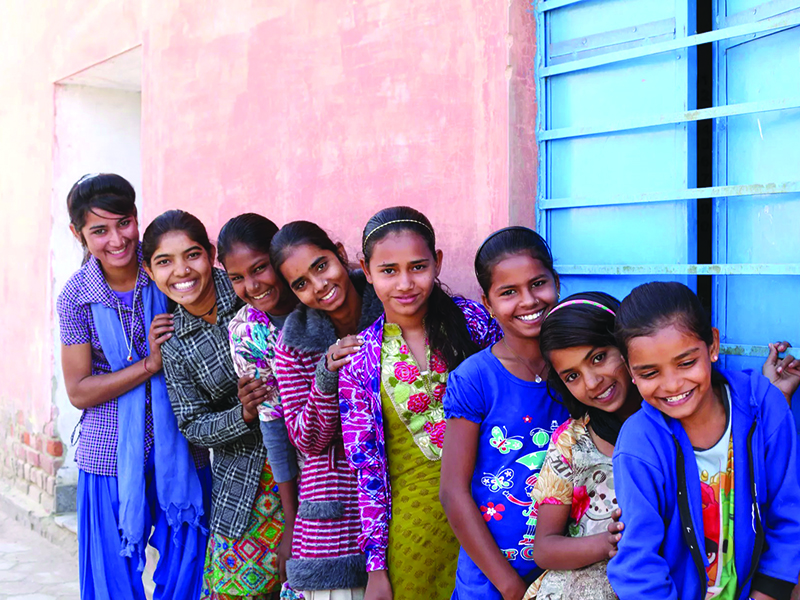
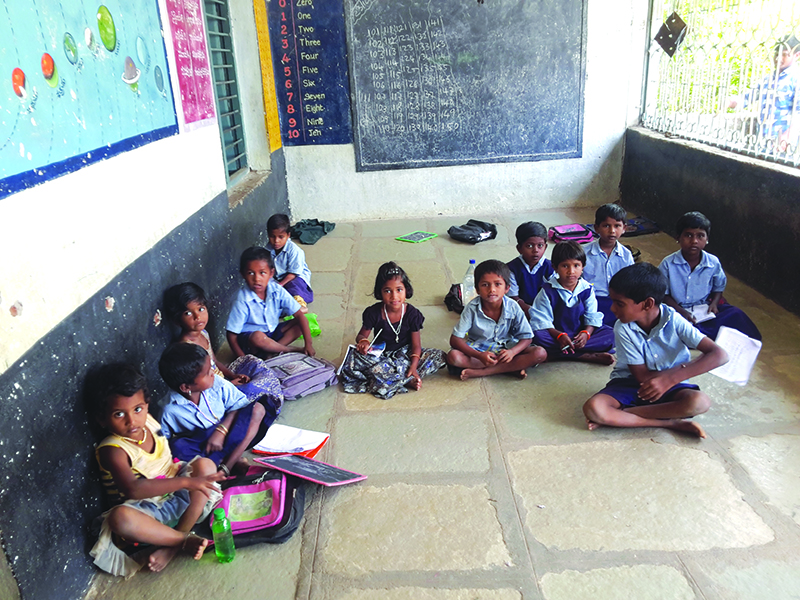
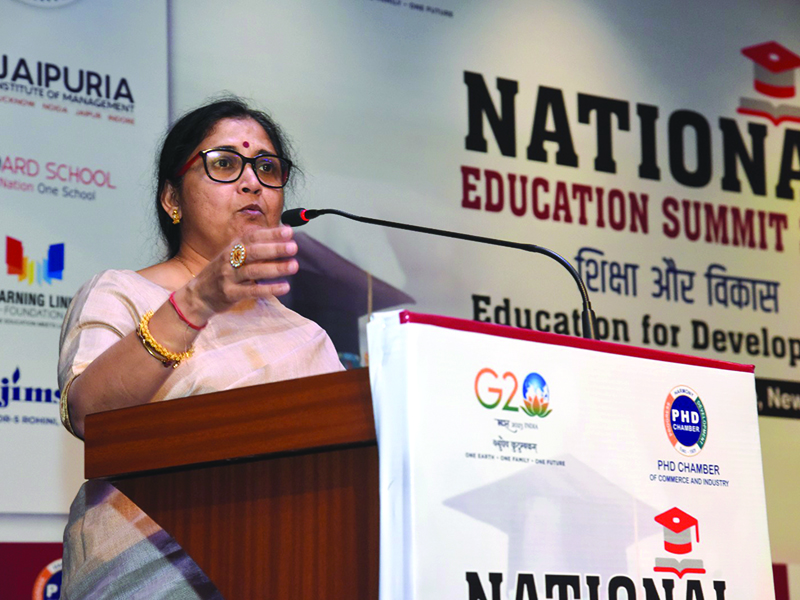
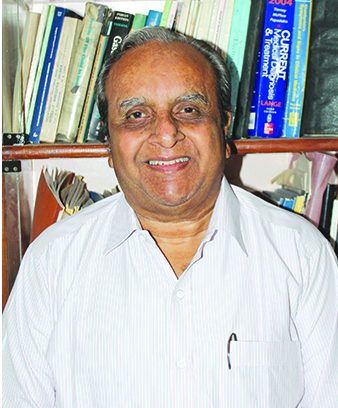
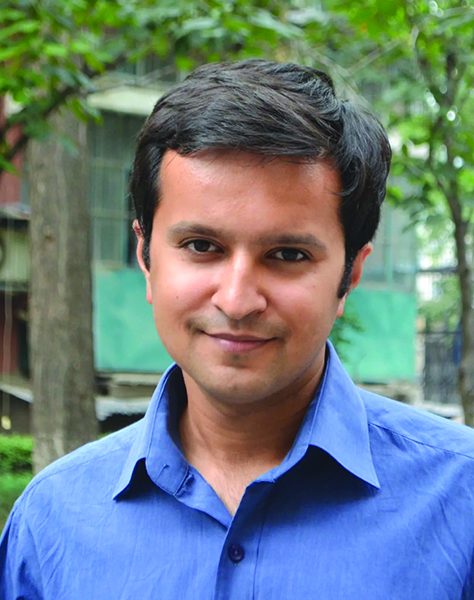
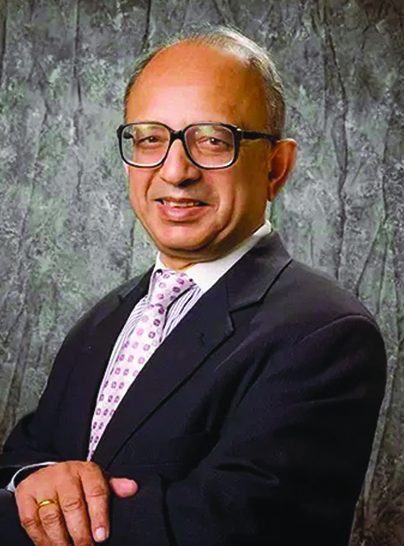


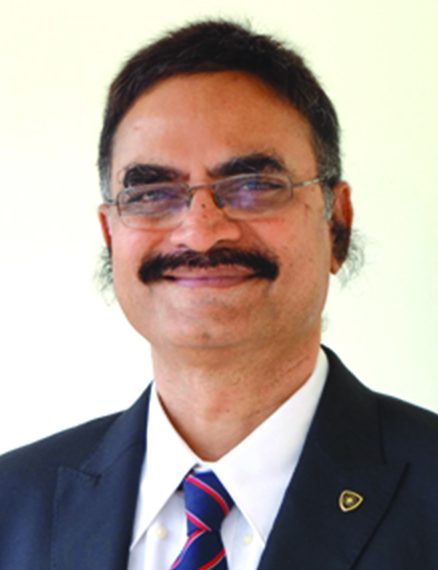
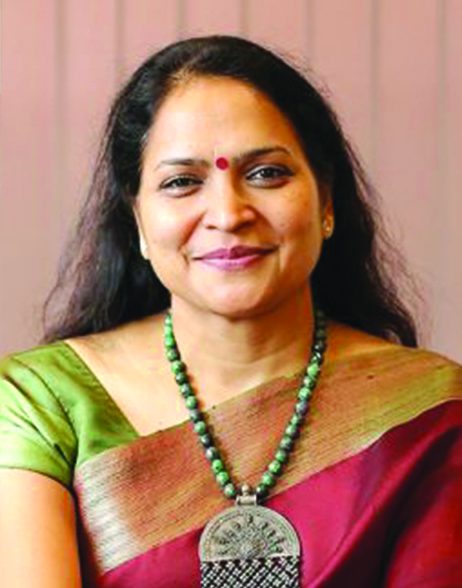
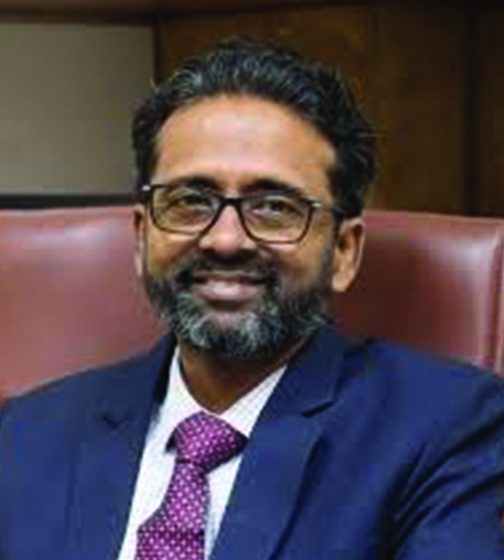


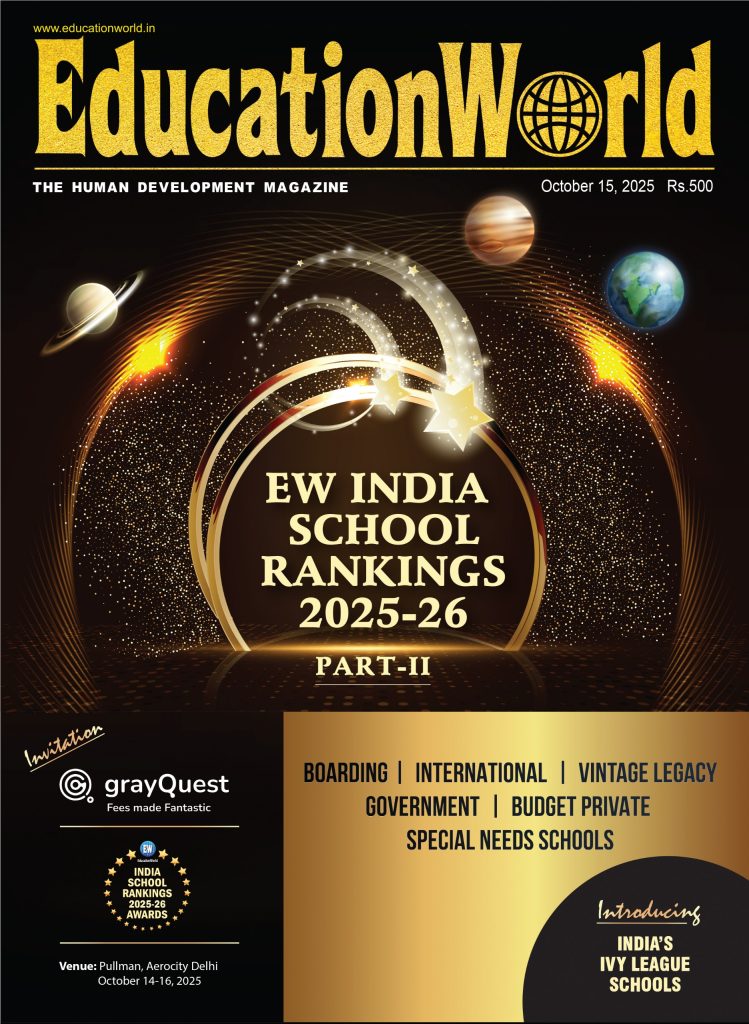








Add comment